Impressionism
Painting
end of the XIXc. — beginning of the XXc.Claude Monet, Pierre Auguste Renoir, Berthe Morisot, Paul Sezanne, Edgar Degas, Alfred Sisley... Photographers influenced by the Impressionists are:
Plotnikov Valery
Impressionism was considered as a radical departure from tradition. By the end of the Impressionist period artists felt liberated from strict rules of composition, subject matter and technique. They no longer depend on the opinion of the Salon.
The impressionists were much influenced by the invention of the XIX century — photography. At the same time this influence was mutual.
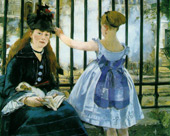
Everyday life on Mane's canvases.
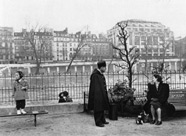
... and on the photos of Doisneau.
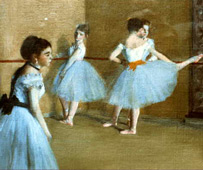
Degas’s ballerinas.

Our contemporary Monk likes to take photos of ballerinas. Just like Degas once was fond of depicting backstage life of Grand Opera in Paris.

Winter scenes on Mone canvas
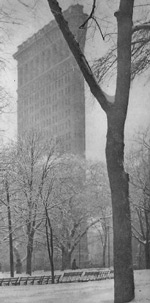
... and on Stieglitz’ photo.
Composition
Black and white photography arrested the very real-life moments that Impressionists pursued. Most of the Impressionists had cameras; in fact, Monet had four and Degas experimented with one of the early Kodak portable models. Their art took on the odd, unexpected, and asymmetrical compositions sometimes caught by the camera.
Degas called photography "an image of magic instantaneity," and was particularly adept at the off-center composition.
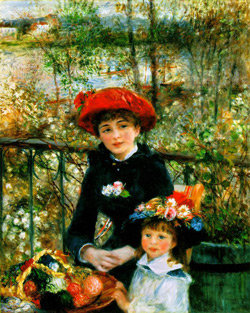
"On the terrace" by my beloved Renoir
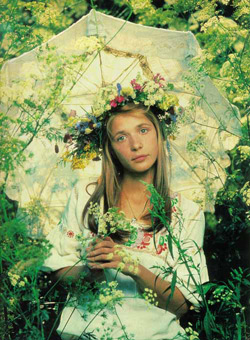
a Russian photographer Plotnikov likes to put his characters in natural surroundings. His pictures reveal that Plotnikov is obviously influenced by Impressionists' experiments.
Colors
The impressionists use vibrant, light colors. Their basic colors are orange, yellow, green, purple, red. Black is excluded.
Complimentary colors, or those directly opposite each other on the color wheel, create the most intense effects when placed next to each other. Red-green or blue-orange combinations cause an actual vibration in the viewer's eye so that color appears to leap off the canvas. No wonder viewers react emotionally to the glittering sunlight on Monet's rivers or the splash of orange costume on Degas' ballet dancers.
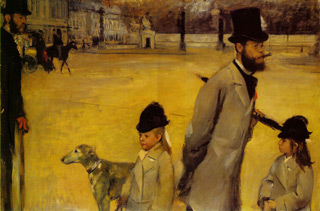
"Place de Concorde" by Degas

Boy against a yellow platform on Denny Lyon's photo, 1974